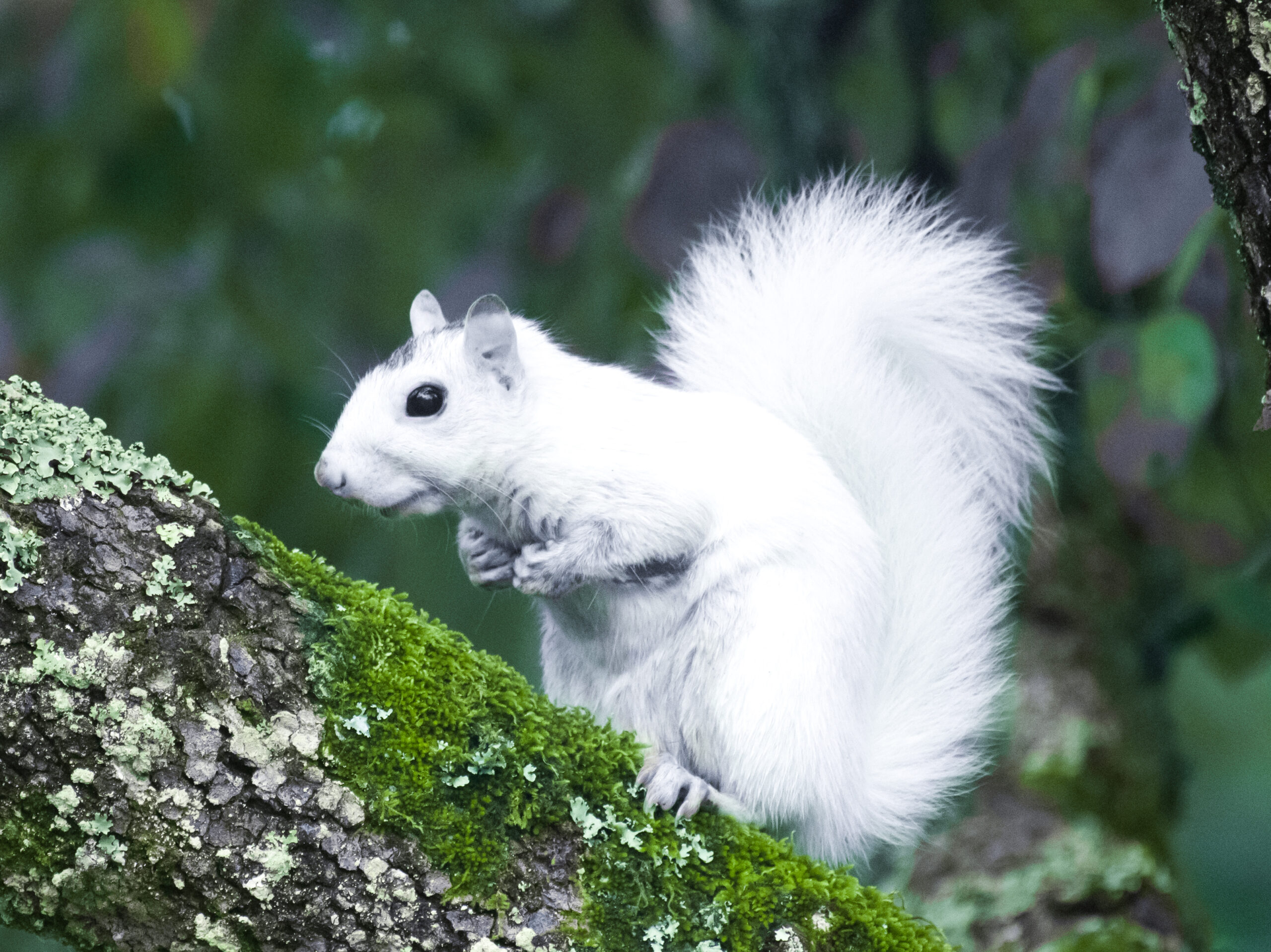The Curious Case of the White Squirrel: A Natural Wonder
White squirrels are a captivating sight, a stark contrast against the usual brown and grey of their urban counterparts. These elusive creatures spark curiosity and often become local legends. But what exactly makes a squirrel white, and why are they so rare? Let’s delve into the fascinating world of these albino and leucistic wonders.
What Makes a Squirrel White?
The whiteness of a squirrel can be attributed to two primary genetic conditions:
Albinism

True albino squirrels are born with a complete lack of melanin, the pigment responsible for color. This results in:
White fur: The most obvious characteristic.
Leucism
Leucism is a broader term encompassing a variety of conditions that reduce pigmentation. In leucistic squirrels, the reduction in melanin can vary, leading to:
Partially white fur: They may have white patches on a brown or grey background, or vice versa.
Why are White Squirrels Rare?
The rarity of white squirrels stems from several factors:
Genetic Predisposition
The genes responsible for albinism and leucism are recessive. This means both parents must carry the gene for their offspring to inherit the condition.
Selective Disadvantages
White squirrels may face certain challenges in the wild:
Predation: Their stark appearance makes them more conspicuous to predators like hawks, owls, and cats.
Famous White Squirrel Populations
Despite these challenges, some populations of white squirrels have thrived in certain areas:
Olney, Illinois
Olney, Illinois, is perhaps the most famous for its white squirrel population. It’s estimated that around one in 500 squirrels in the town are white. The town even celebrates an annual White Squirrel Festival.
Brevard, North Carolina
Brevard, North Carolina, also boasts a significant population of white squirrels, believed to be descendants of a single pair introduced in the 1940s.
Marionville, Missouri
Marionville, Missouri, has a long history of white squirrels, with sightings dating back to the early 1900s.
Observing White Squirrels: Tips and Etiquette
If you’re lucky enough to spot a white squirrel, remember to observe it from a distance and avoid disturbing its natural behavior. Here are some tips:
Use binoculars or a telephoto lens: This allows you to appreciate their beauty without getting too close.
The Importance of White Squirrels
White squirrels serve as important reminders of the incredible diversity within the animal kingdom. They also highlight the delicate balance of nature and the impact of genetic variations within populations.
Conservation Efforts
Protecting white squirrel populations requires a multi-faceted approach:
Habitat preservation: Ensuring the availability of suitable habitat, including food sources and safe nesting sites.
Conclusion
White squirrels are a true marvel of nature, captivating our imaginations and reminding us of the wonders of the natural world. By understanding their unique characteristics, appreciating their rarity, and taking steps to protect their habitats, we can ensure that these enchanting creatures continue to grace our landscapes for generations to come.


/cdn.vox-cdn.com/uploads/chorus_asset/file/25378171/2139238696.jpg?w=200&resize=200,112&ssl=1)


.jpg?auto=webp&format=pjpg&width=3840&quality=60&w=200&resize=200,112&ssl=1)
